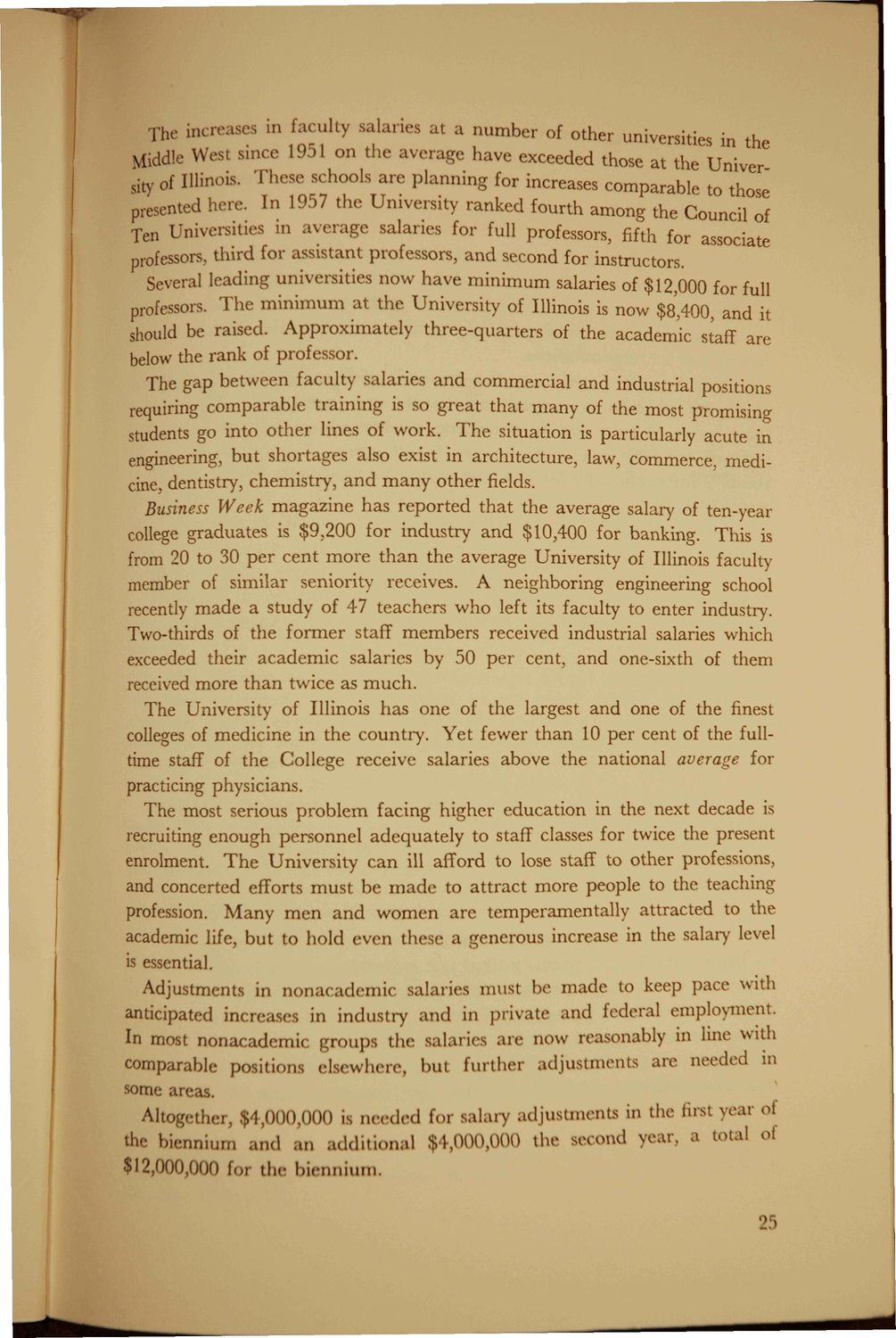| |
| |
Caption: Booklet - State of University (1958)
This is a reduced-resolution page image for fast online browsing.

EXTRACTED TEXT FROM PAGE:
Increases ill faculty salaries at a number of other universities in A West since 1951 on the average have exceeded those at the U w ! Midd! hese schools are planrung for increases comparable to those s i t y 0 f Ilhno.s. presented here. In 1957 the University ranked fourth among the Council of Ten Universities in average salaries for full professors, fifth for associate professors, third for assistant professors, and second for instructors Several leading universities now have minimum salaries of $12 000 for full professors. T h e minimum at the University of Illinois is now $8 400 and it should be raised. Approximately three-quarters of the academic staff are below the rank of professor. Th0 The gap between faculty salaries and commercial and industrial positions requiring comparable training is so great that many of the most promising students go into other lines of work. T h e situation is particularly acute in commerce cine, dentistry, chemistry, and many other fields. Business Week magazine has reported that the average salary of ten-year college graduates is $9,200 for industry and $10,400 for banking. This is from 20 to 30 per cent more than the average University of Illinois faculty member of similar seniority receives. A neighboring engineering school recently made a study of 47 teachers who left its faculty to enter industry. Two-thirds of the former staff members received industrial salaries which exceeded their academic salaries by 50 per cent, and one-sixth of them received more than twice as much. The University of Illinois has one of the largest and one of the finest colleges of medicine in the country. Yet fewer than 10 per cent of the fulltime staff of the College receive salaries above the national average for practicing physicians. The most serious problem facing higher education in the next decade is recruiting enough personnel adequately to staff classes for twice the present enrolment. T h e University can ill afford to lose staff to other professions, and concerted efforts must be made to attract more people to the teachingprofession. Many men and women are temperamentally attracted to the academic life, but to hold even these a generous increase in the salary level is essential. Adjustments in nonacadcmic salaries must be made to keep pace with anticipated increases in industry and in private and federal employment. onacademic are some areas. justments . ( ) ( ) ( ) $12,000,000 for the hi en nium. 5
| |